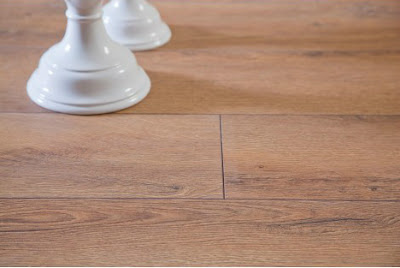Buying New Laminate Wood Flooring In Ireland? Here Are Some Considerations
Bottom line first: if
you have been inspired to buy laminate flooring, stressing on how
‘budget-friendly’ it can be, then that’s not the whole story!
Because laminate flooring is not all about offering a
“low-cost alternative to wood flooring’; not anymore. Modern laminates have
evolved remarkably with improved quality, innovative mechanism, easy
installation, and shows a penchant for a reality where it can even comply with
environmental sustainability.
Though it is still cheaper than solid wood flooring and
even engineered wood flooring, the prices can be much higher than what it used
to be a couple of years ago in Ireland, mostly for having upgraded
features.
That said, here is a streamlined concept of things that
you should check out when buying new laminate flooring.
Start From The Core
If you think that underneath the decorative layer they
are all the same, then you’d be wrong. If you look closer, the ‘lamination’
process involves pasting together several layers of material sheets that form
the backing layer, the substrate layer, the applique layer which is the
photograph actual decor and on top of it goes the wear layer. The substrate
layer or simply said, ‘core’ is the most important. It comes in the variants of
melamine and fibreboard. Melamine core laminates are seldom used nowadays,
mainly because they are not as strong as fibreboard and also because there is a
toxicity issue associated with it. Fibreboard is made of real wood scraps, so
ideally it makes more sense to say Laminate Wood Flooring. Now when you are going for
fibreboard core, you get them in high-density (HDF) or medium-density
fibreboard (MDF). The density of the fibreboard and the thickness of the
substrate together determines the strength of the laminate flooring.
Thickness Without The Pad
Contrary to popular belief, the thickness of laminate
flooring doesn’t dictate the quality of it, but it is more about the strength
and resilience, that many people often interpret differently. These floorboards
come in standard thickness variations of 7mm, 8mm, 10mm and 12mm. Rarely you
might find 6mm, floors. It is obvious that the kind of foot traffic and
furniture traction that a 12mm floor can withstand, can be too much for a 7mm
floor to handle. That doesn’t have to mean that the 7mm product is inferior in
quality than the 12mm one.
On a general scale, if you are a single inhabitant in a
renter’s apartment, and spend most of your time at workplace, and have a couple
of guests coming over at weekends, you are good to go with a decent quality 7mm
floor, that could last for years. So from that standpoint, it might be easier
for you to determine the thickness that’s apt for you.
You should be aware that the thickness of the
floorboards is actually calculated without the underfloor padding. But
sometimes, some products come with attached pads and many laminate flooring stockists end up
misleading their customers willingly or unwillingly, by quoting them for the
thickness together with the backing pad. Which should not be done.
Finally, look for the AC rating of floors to determine
their overall resilience. It is a grading system that works as per EU
standards, in Ireland, and range from AC 1 to AC 5.
How It Looks - Layout, Aesthesis, Features And All The Drama
While most people put the aesthesis to be the top
priority, some buyers focus on the budget. There should be a balance in both.
When it comes to laminate floors, there is a seemingly endless range of
options, so is no point of running the ‘what comes in my budget’ notion. If you
don’t find what you are looking for, simply go for the online stores that
dedicatedly stock the best products by top brands.
Today, you get diverse features in laminates that are
crafted to suit different home layouts and environments. You may have
water-resistant options, scratch and scuff resistance options, and those that
are easy to keep clean. The most significant feature among all this is the
environmentally produced laminates that do not leech harmful chemicals like
formaldehyde or Urea. Another feature is the installation, you can get the
tongue-and-groove installation system, or click-lock installation, that don’t
need any glue or nails.
Warranty And Brand Value
Let’s be honest, the best quality of laminates comes
out of the factories of top brands like Kronoswiss, Balterio, Quickstep etc.
these products come with heavy warranties on quality, ensuring that it won’t
fade, peel or crack if you maintain the proper maintenance instructions.





Comments
Post a Comment